In this post we’re capturing a point-in-time reference of the Exchange Server Subscription Edition installation process. As Microsoft continues to evolve Exchange with its subscription-based model, setup screens, prerequisites, and configuration options may change over time. The goal here isn’t to walk through the steps in detail, but simply to document what the installation experience looks like today. A visual snapshot for future comparison and reference. These screenshots provide a baseline of the current setup flow, useful for anyone planning deployments or tracking how Exchange Server continues to evolve.
The overall process should look *VERY* similar to Exchange Server 2019. In the RTM release of SE there are really three things that changed:
- License Terms
- Name changed to Subscription Edition
- Build & Version number
This was done to ease the transition from Exchange 2019 to SE.
Planning And Preparation
As with every project proper, planning and preparation is required. Deploying Exchange is no different. Learn has an overview of the steps that are required:
-
Install the Exchange 2016 Mailbox role using the Setup wizard
-
Install the Exchange 2016 Edge Transport role using the Setup wizard
Note that the AD schema information has not changed between Exchange 2019 CU15 and Exchange SE RTM.

And here is a lab environment where the first two Exchange 2019 servers were an upgrade to Exchange Server SE. Note that the AdminDisplayVersion has a increment for the build, but the ExchangeVersion and major build remains the same.
Exchange SE Fresh Install
Kicking off the installer you can immediately see that the name is now Exchange Server Subscription Edition.

You will want to ensure that you read the license aspect as this part changed, and also look at the Exchange team blog post and comments here to understand what this means with SE.

Note that by default the recommended settings option was selected to send diagnostic data.
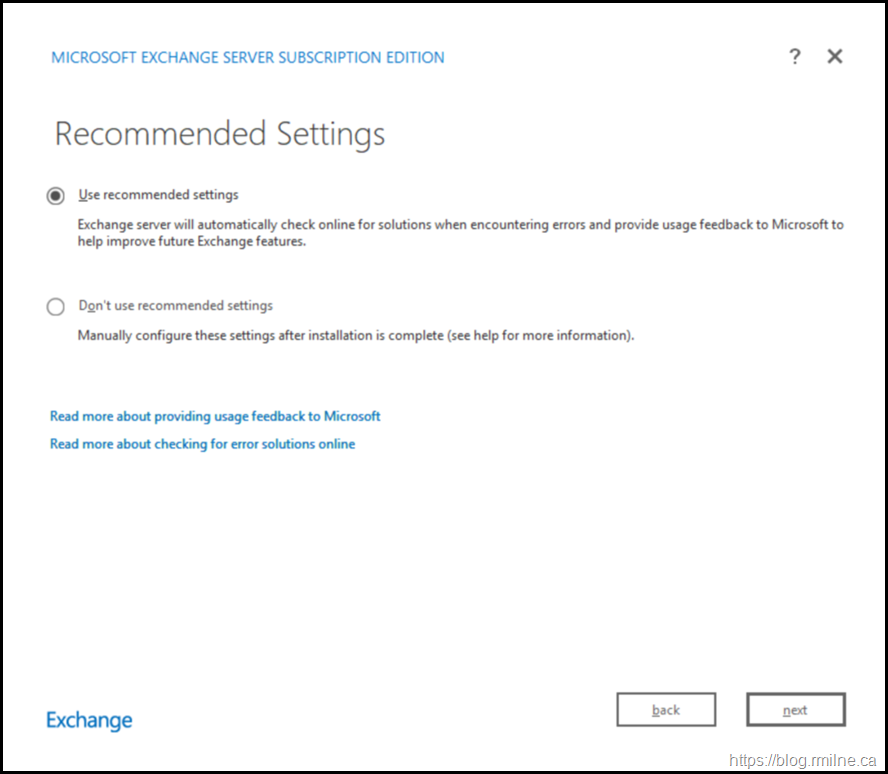
Long gone are the options to split out Hub, CAS roles etc. All of that is now combined in the mailbox role.
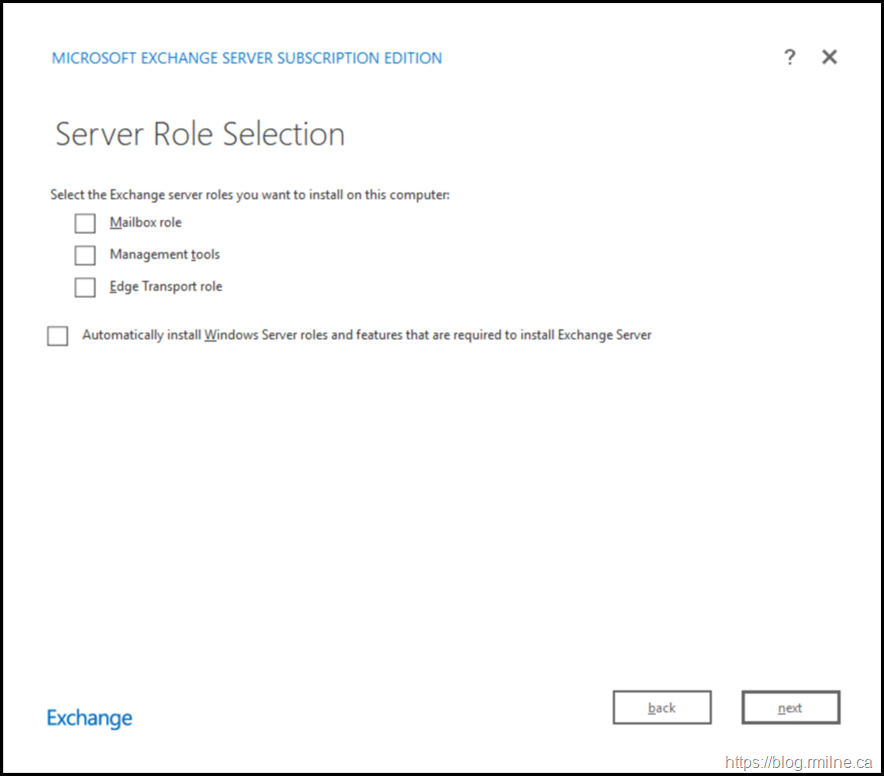
This will be a regular Exchange server, domain joined and will host mailboxes etc. so the mailbox role option was selected.
Note that the management tools option is selected automatically. All of the OS prerequisites were installed prior. So there is no need to use the option to automatically install the OS bundled pre-requisites.
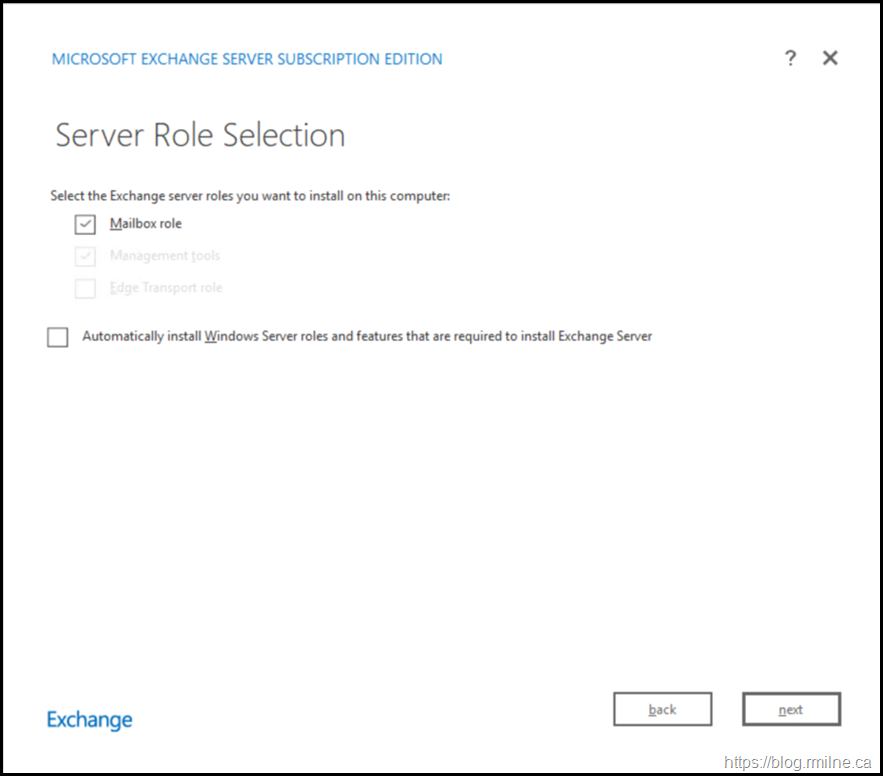
As a sidenote, I never used to use that feature as it would add an extra reboot step in older versions of Windows. Exchange would see a pending restart and refuse to install until the pending restart was cleared. That was corrected in Windows, but old habits stick...
Exchange SE still defaults to the same v15 installation path.
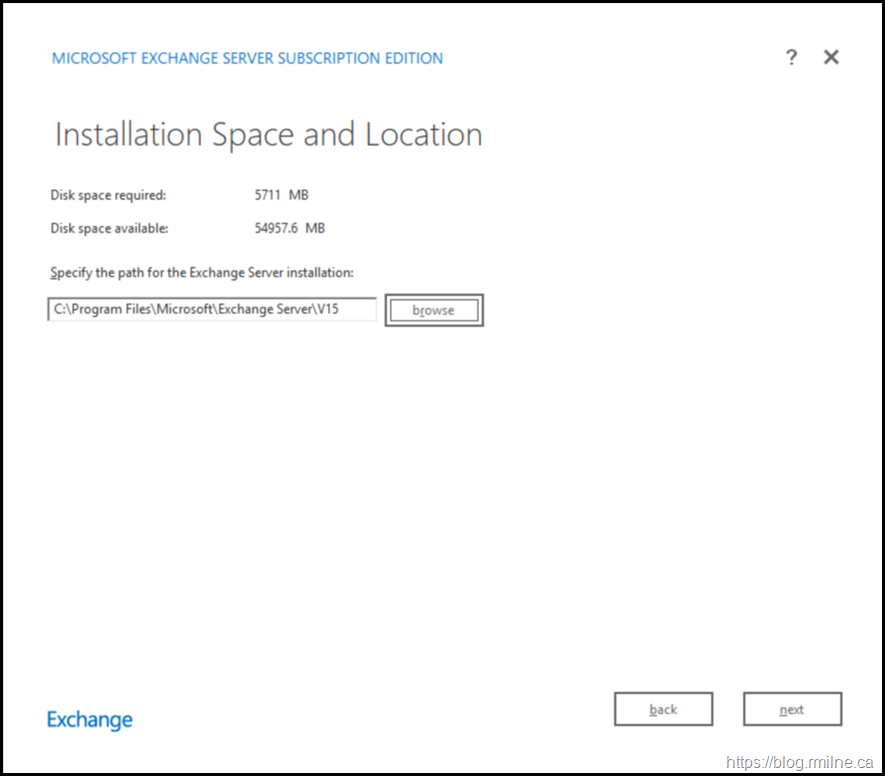
Note the double negatitive on the malware protection settings. In the below, selecting no means that "yes, I want malware scanning to be enabled".
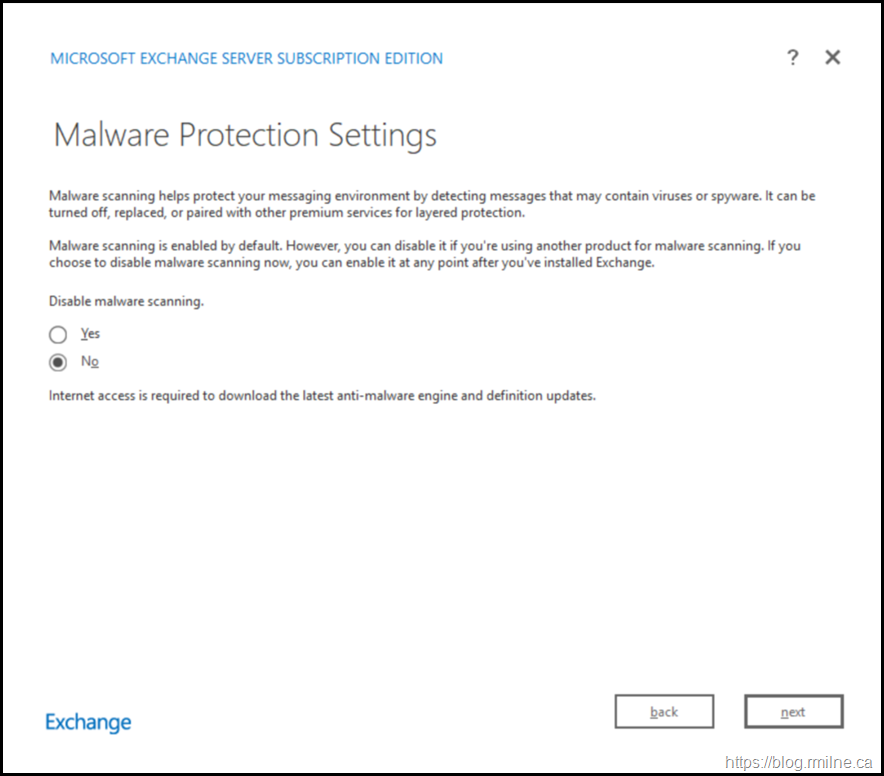
Then setup does a final check to make sure that we are good to go.
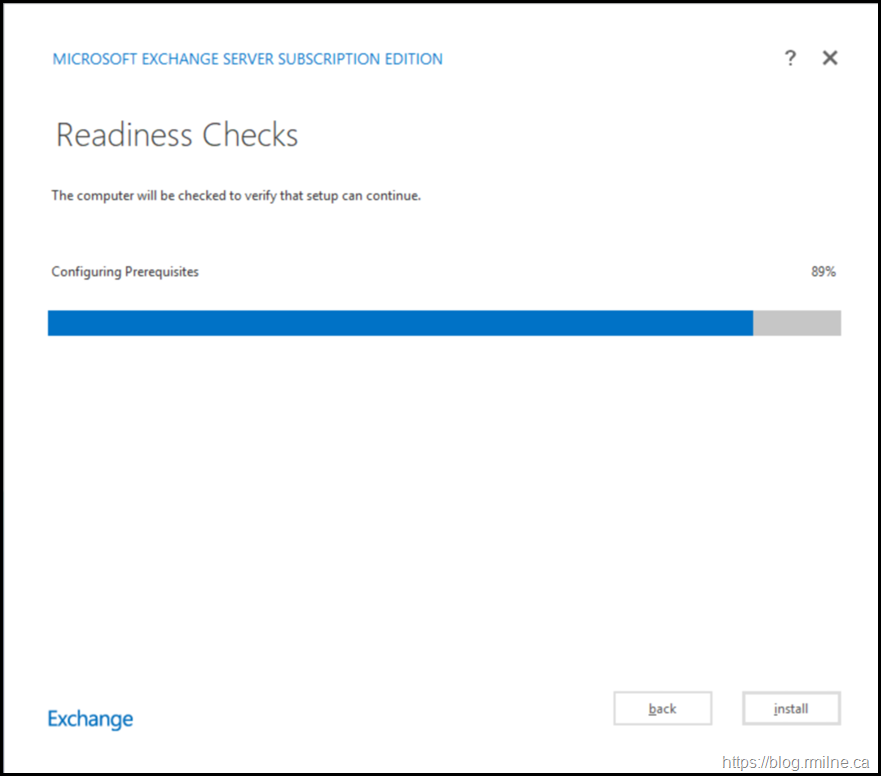
If that completes with no issues, the Install button then is enabled.
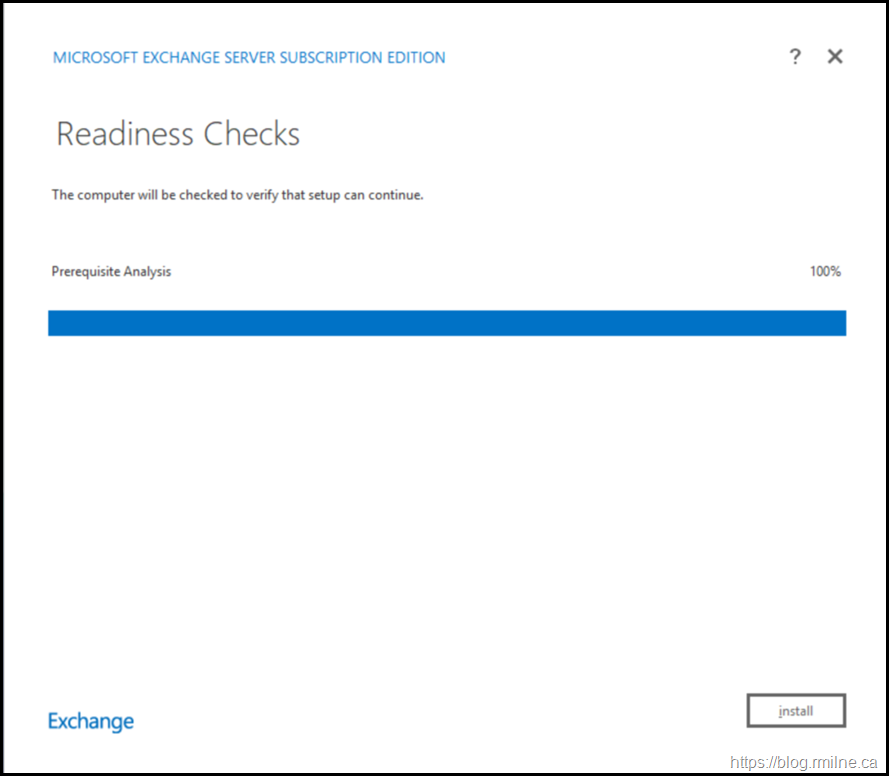
Click install and then strap in for a rather lengthy install. It is not quick.
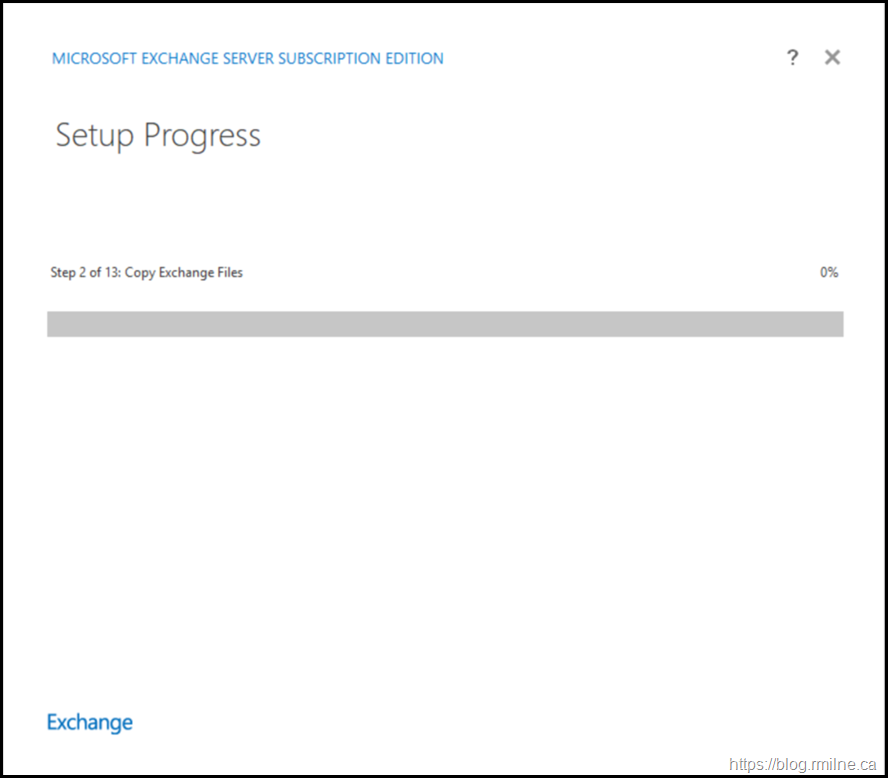
In some lab environments this takes an hour.
Once setup has completed, not that Extended Protection is enabled by default and you are asl prompted to restart the server and also run the Exchange Health Check script to make sure all is good.
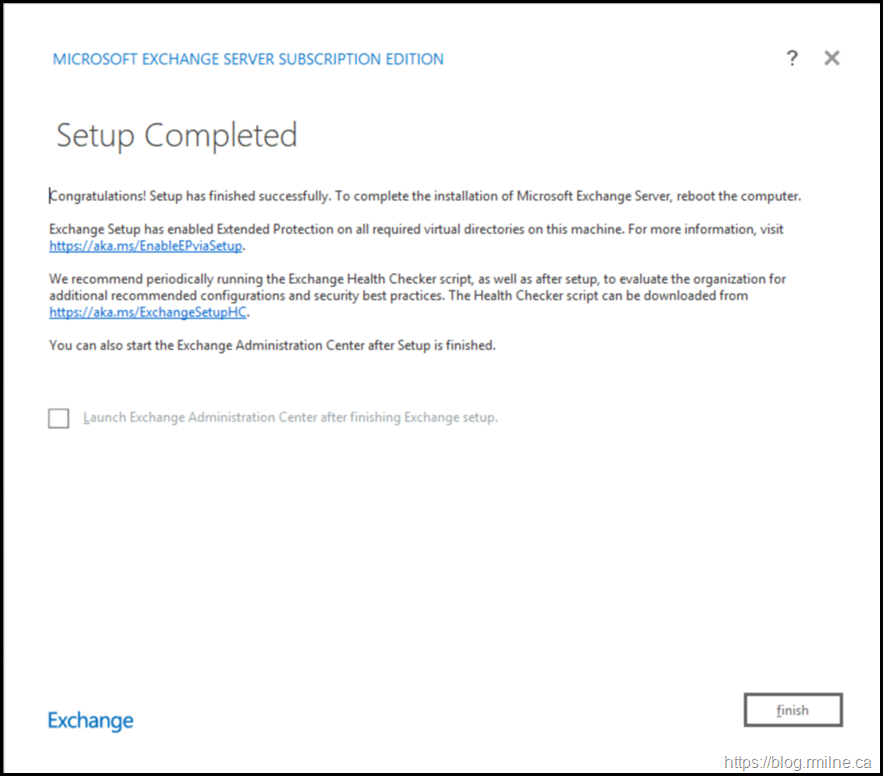
Upgrade
The upgrade process is very similar to the above. Screenshots below for reference.





Upgrade - Command Line
As before, you must accept the license agreement even for the /PrepareSchema steps.
While you can just run the install, assuming that the account has the necessary permissions in AD, larger organisations will want separate teams to execute the different steps. Exchange admins are not typically schema admins or Enterprise Admins in large orgs.
Note the change in syntax from a couple of years ago:

The syntax changed for this back with Exchange 2016 CU22 and Exchange 2019 CU11.
Once we add the correct option, we can proceed.
Setup.exe /IAcceptExchangeServerLicenseTerms_DiagnosticDataON /PrepareSchema

Note the last section that points out that setup tries to preserve the existing configuration rather than stomping all over it.
The Exchange Server setup operation completed successfully.
Exchange Setup preserved the required configurations during upgrade. More details can be found in Exchangesetup.log
located in <SystemDrive>:\ExchangeSetupLogs folder. For more information, visit:
https://aka.ms/PreserveExchangeConfig2019.
Next up - /PrepareAD
Setup.exe /IAcceptExchangeServerLicenseTerms_DiagnosticDataON /PrepareAD

Finally, /PrepareDomain. It may not be needed in call cases, but if we went to the trouble of running the other steps one by one...
Setup.exe /IAcceptExchangeServerLicenseTerms_DiagnosticDataON /PrepareDomain

Now that AD DS has been updated, time to crack on! Of course ensure that replication has completed, and the time taken will depend upon your environment.
Setup.exe /IAcceptExchangeServerLicenseTerms_DiagnosticDataON /Mode:Upgrade

Incomplete Installation
Should something go wrong, and you error out at the end of setup. Restart the server, and re-run setup.
It will notice the pending watermarks and then try and pick up where it left off.
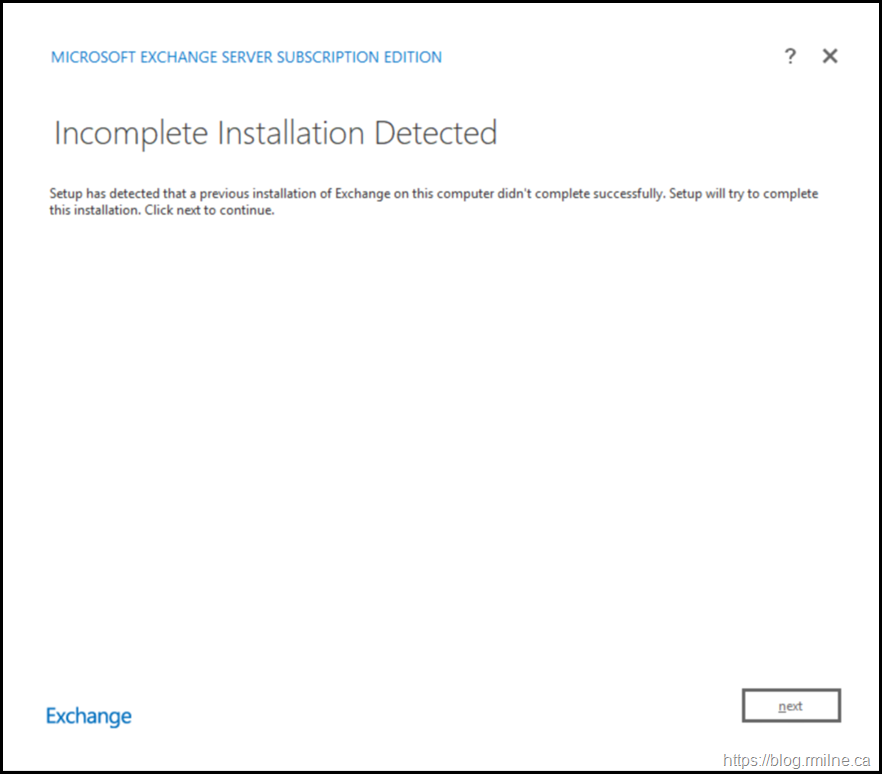
And if it completes successfully, then you get the same end screen.
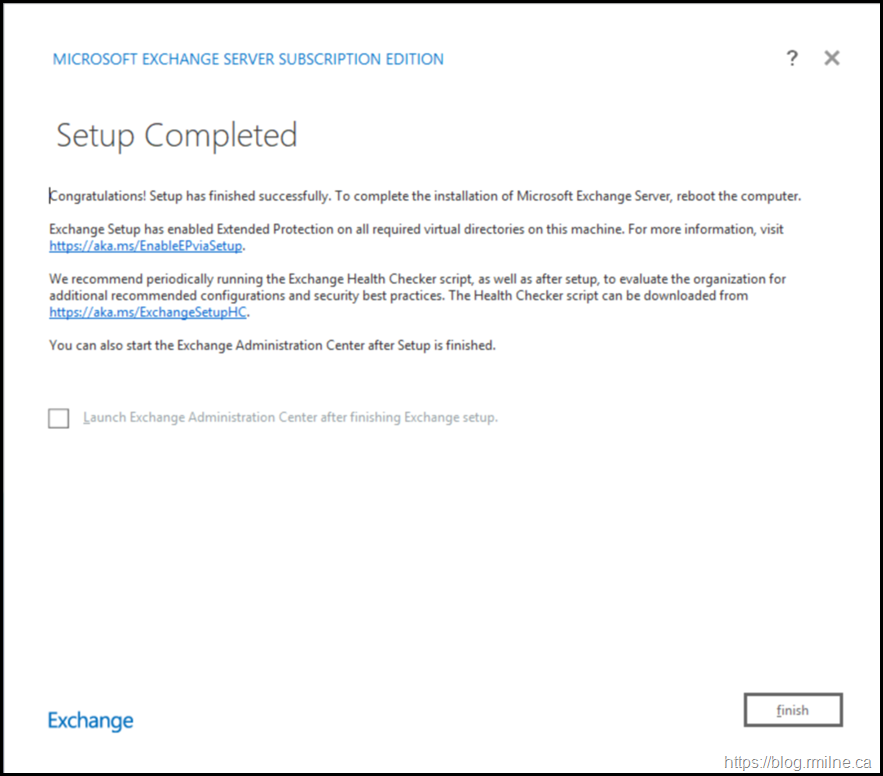
Cheers,
Rhoderick